The Perfect Size Catamaran to Sail Around the World
Whether you're serious about setting sail in the next few years or merely in the dreaming stages of world cruising, the vessel you want for the trip will always take center stage in any plans. If you decide on a catamaran, you've got to give some thought to what the best size is for you and your plans.
The perfect sized catamaran is 37 to 47 feet long. If you get too much smaller, living space gets cramped and cargo capacity drops. Too much bigger, and your expenses and difficulty of handling a big boat get higher.
That's not to say that there are smaller catamarans or much larger ones that work for you. Everything from your skill level and crew size to your budget affects the perfect size.
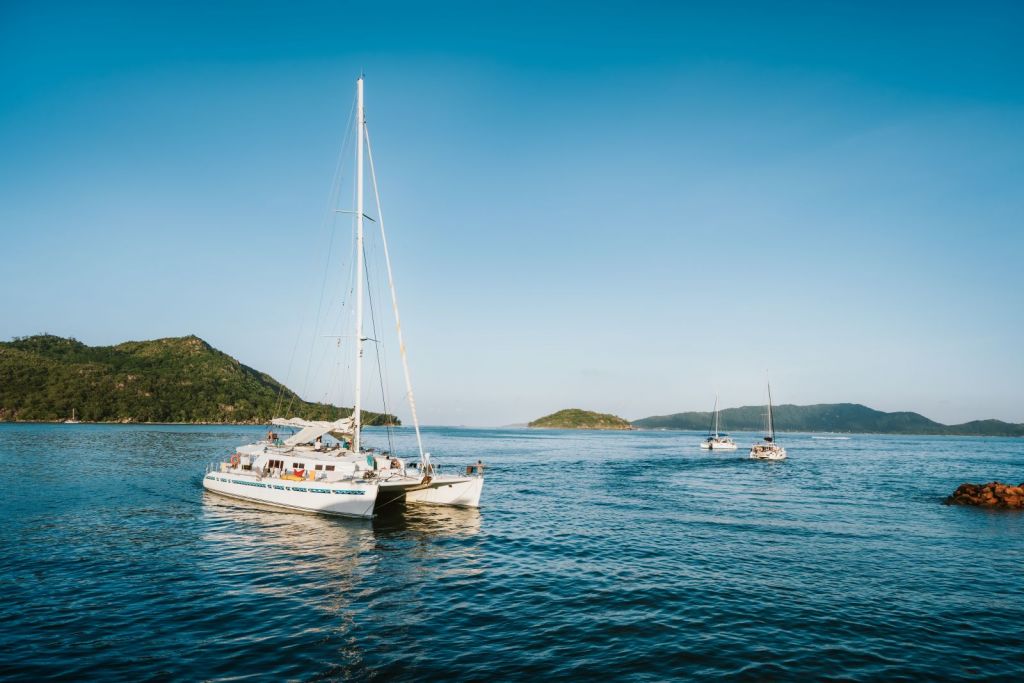
Finding the Perfect Size Catamaran
There's never a "perfect" boat for anything without considering the needs and capabilities of the skipper and crew; there is no "one size fits all" boat. What you have to do is look at your limits, tolerances, wants and desires and compare them with your budget and reality. Like Goldilocks and the Three Bears, you're looking for that one with a fit that is "just right."
This One's Too Small
If you're very into a minimalist lifestyle, you certainly get around the world on a smaller catamaran. Many people have done it. Smaller size equals less speed, but if you stay light and lean, you can still keep the boat moving. Sailing the world with stops isn't about speed records, it's about getting there safely.
Catamarans are very sensitive to weight, and their performance will drop off rapidly if you overload them. Smaller catamarans can carry a lot less than bigger ones, and are more sensitive to overloading. Not only is there less room for equipment, it's less water, less food, and fewer spares. Very few cats under 32 feet have much room at all for gear and equipment without overloading them. Less food and water storage limits your range and how long you can stay out when you leave population centers. A watermaker offsets some of this, but adds weight and complexity, and it needs power.
The other size consideration on the low end is how many people you sail with. Sleeping quarters and living space are tighter, so families with lots of children or people expecting lots of guests or who want additional crew need more space and a too-small catamaran will not suit.
This One's Too Big
On the other end of the size scale, it's very easy to buy too much boat. Big boats are beautiful and exciting and there's so much space and comfort. It's natural to want more. But handling a big boat is an acquired skill, and new cruisers with too-big boats often end up overwhelmed and miserable - this is as true for monohulls as it is for cats.
As catamarans get longer, they also get wider, and a 50+ foot catamaran is a pretty big platform to navigate in tight quarters. More boat also equals more load and more tasks to do, and a couple who can handle a 42 footer themselves may want more crew for a 55 foot boat.
Expenses also rise with boat length for all boats, and it's not a straight linear progression. Bigger boats get expensive to purchase quickly. Boat services are often charged by the foot, but an overlarge catamaran can run into extra expenses. Wide cats can't fit in many lifts that could easily handle a heavier or longer monohull. Some marinas charge extra for wide slips, or may even require extra wide multihulls to take two slips.
Big boats give you lots of living space for people and gear, but with a substantially increased cost from purchase on to every step of ownership.
This one is Just Right
The "perfect" catamaran for you is going to answer the following questions in ways that meet your specific needs.
- Can I afford to buy it? You can not spend your last nickel buying a boat; you'll need money to cruise.
- Can I afford to own it? Buying a boat is just the first step; you'll spend a lot of money on maintenance and ownership after the purchase.
- Does it have enough space for my planned crew? Space for guests is good to have, but you shouldn't buy a big boat expecting lots of traffic.
- Does my crew have the skill to handle a boat this size comfortably?
The time to answer these questions is well before you sign the dotted on line on a purchase and sale agreement.
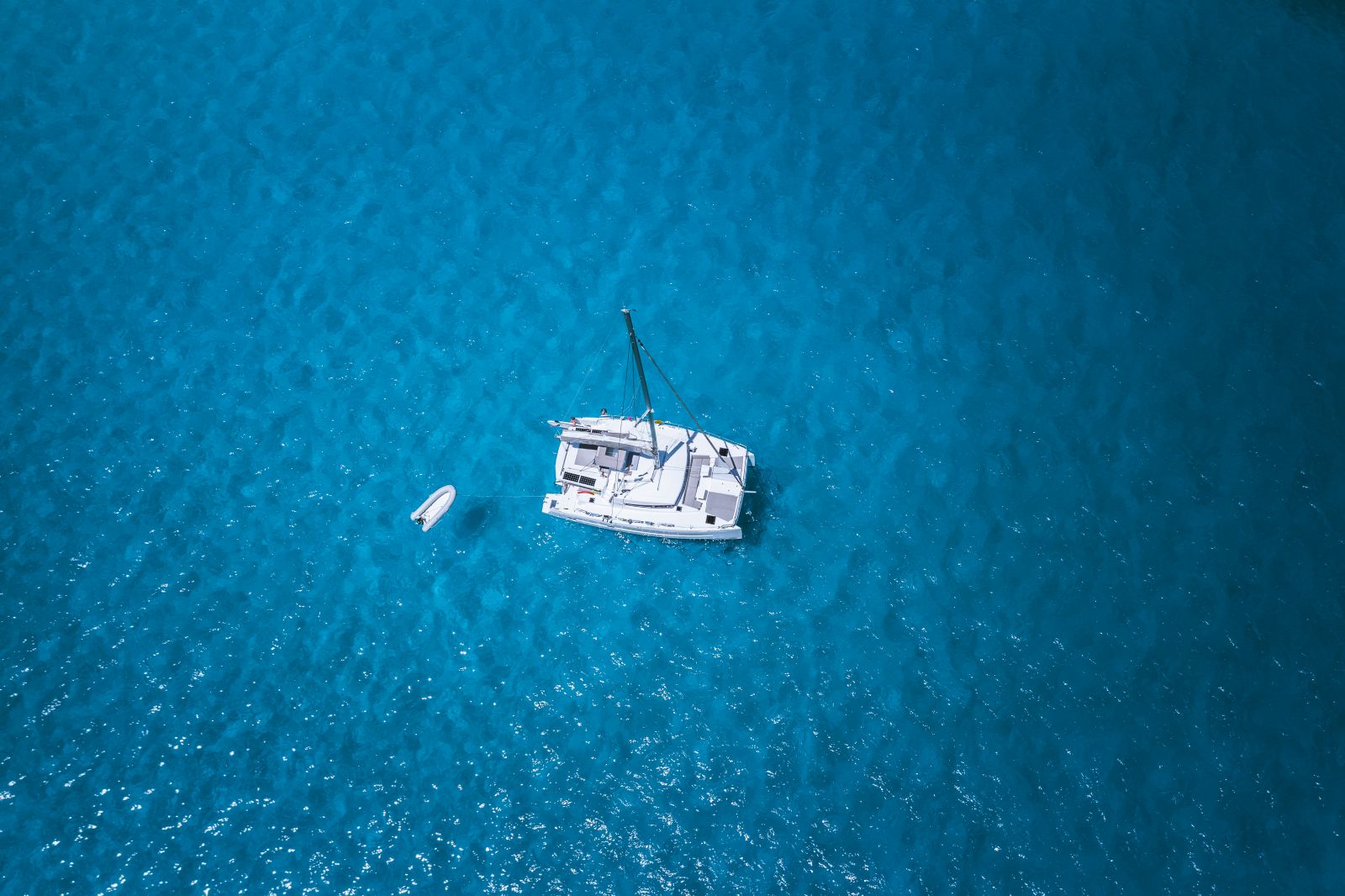
How Do I Tell if it's "Just Right?"
There's no 100% perfect formula for such a personal topic. Honestly assess your own capabilities, plans, and finances to come up with that answer. And you have to do a lot of research into boats.
You can start with websites and magazines - active builders will have detailed information about their boats, and you can easily find many reviews and article about almost every boat model. When you look at websites, keep in mind that boat builders are selling you something and reviewers are not. The breathless and gushy hype on the builder's website may not match the reality of sailing and owning the boat, so seek articles with test sails.
An excellent source of information is active cruisers who are sailing on the exact type of boat you think may suit you. No one can separate the marketing hype from pragmatic realism like someone who has crossed an ocean on a boat or skinned their knuckles in its dark spaces. Many cruisers blog about their experiences and you’ll find rich information about sailing, performance, and maintenance. Many cruising bloggers will happily answer polite questions about their boats.
Look at as many catamarans as you can across a range of sizes. You can see many boats at a single big boat show, and if it's in your budget, a charter is a fantastic way to try a boat on for size. When you get closer to a decision and are talking to brokers, don't be shy about looking at a lot of boats in your search.
On the whole, it's better to err on the size of "a little too small" than "much too big." Feeling out of control of your yacht and unable to handle it is a sure-fire way to cut your cruising plans short. There's nothing more miserable than being stuck in a marina because you don't feel safe handling your own vessel.
If you get a boat that's too small, you will want to upgrade and it will chafe and feel cramped while you work it out. But a too big boat you can’t handle or afford? Too many cruisers break their dreams on the rocks of a too-big boat.
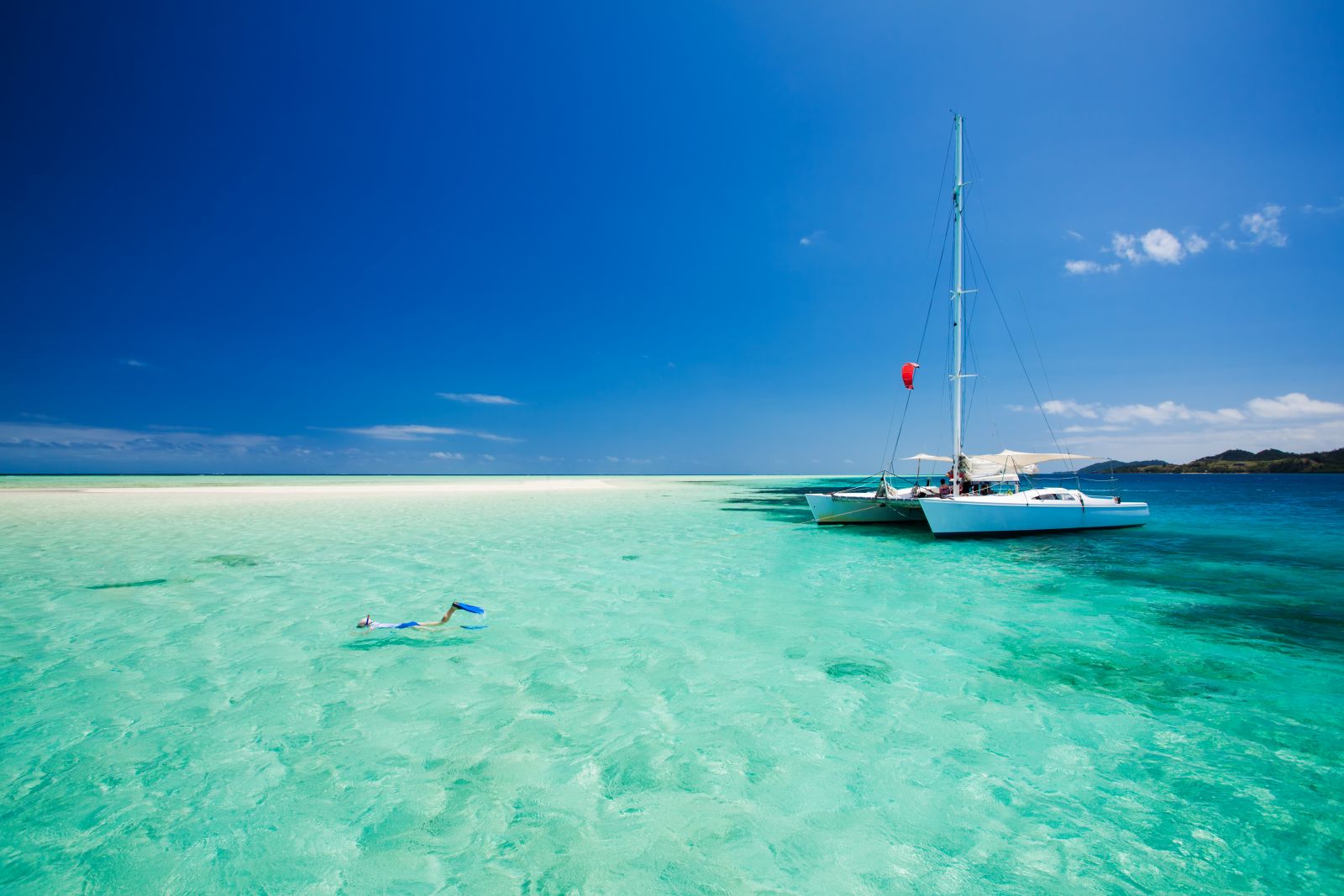
What Is the Best Size Catamaran for Ocean Sailing?
Ocean sailing differs from coastal cruising. You've got long passages to prepare for, and you're likely to pass out of the range of land-based rescue.
The size range discussed above - 37 to 47 feet long - is quite safe for offshore passages.
What's more important are design considerations and build quality of your catamaran. Things like low bridge decks aren't optimal for offshore sailing regardless of the size of a boat, since they're prone to pounding and slamming in rough conditions. Catamarans are built for lightweight, but that doesn't mean they need to be lightly or poorly constructed.
One area where larger catamarans are better offshore is passage speed. While cruising under sail is never a race, the ability to cover a lot of water in a day gives you more options routing around bad weather or into good wind. It's always better to be a little faster.
Can You Sail Around the World in a Catamaran?
You can, and many sailors has done it many times. Cruising catamarans are becoming a more popular choice as more and more sailors discover how spacious and comfortable they can be.
Some catamarans, like some monohulls, may be better suited to the task than others, though a complete exploration of that topic is beyond this article.
Are Catamarans Safe in Rough Seas?
Catamarans are as safe in rough seas as any small sailboat. Rough weather sailing is more a function of crew and boat preparation than the specific type of boat. A well-prepared boat with a skilled crew will be safer in severe conditions, irrespective of the type of boat.
Any poorly prepared boat with unskilled crew can be very dangerous.
The major concern for most people with catamarans is capsizing. A capsized cat will not return upright like a monohull. It can not restore positive stability once it goes over. Though capsizing a large cat is very difficult and rare, manufacturers build in many safety features to help crews survive, like escape hatches to prevent crew from getting trapped inside the hulls.
But a catamaran is not any more or less inherently safe offshore than a monohull.
Did you find the answer to your specific question?
👍 1 👎 1
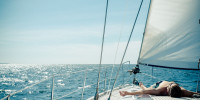


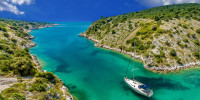
Leave a comment